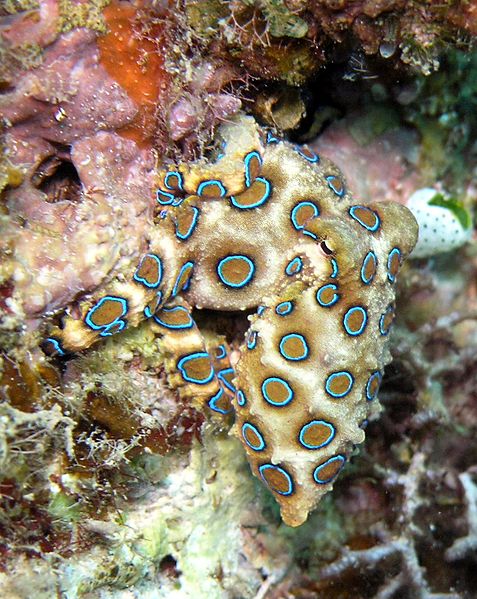Interactions
 Much
unlike the
bighead carp, a fish that lives in schools, the greater
blue-ringed octopus tends to live alone. They are very
protective of their homes. Since they don't have the
luxury of the ADT security system like humans do, an uninvited
guest is at risk for a physical altercation. I certainly
wouldn't want to fight an animal that could poison me!
Much
unlike the
bighead carp, a fish that lives in schools, the greater
blue-ringed octopus tends to live alone. They are very
protective of their homes. Since they don't have the
luxury of the ADT security system like humans do, an uninvited
guest is at risk for a physical altercation. I certainly
wouldn't want to fight an animal that could poison me!
One interaction that is most concerning, is the interaction between Hapalochlaena lunulata and humans. Because of its deadly tetrodotoxin, it is advised that humans, especially small children, steer clear of the greater blue-ringed octopus in event that they come into contact with one. The blue rings may be beautiful, but it is the signal that the octopus is irritated and could release its toxin. As mentioned on the toxin page, it is lethal to humans and should be avoided at all costs. On the opposite side of the spectrum, humans choose to interact with this organism in order to better understand the toxin by performing research. The research that is performed typically focuses on the tetrodotoxin levels and concentrations, or its behavior in specific settings. Hapalochlaena lunulata can be easily aggravated and the following attacks can be deadly, regardless of the octopus' small stature. The strangest human interaction, in my opinion, is the capture of the octopus to eat as a gourmet food!
Continue to Adaptation